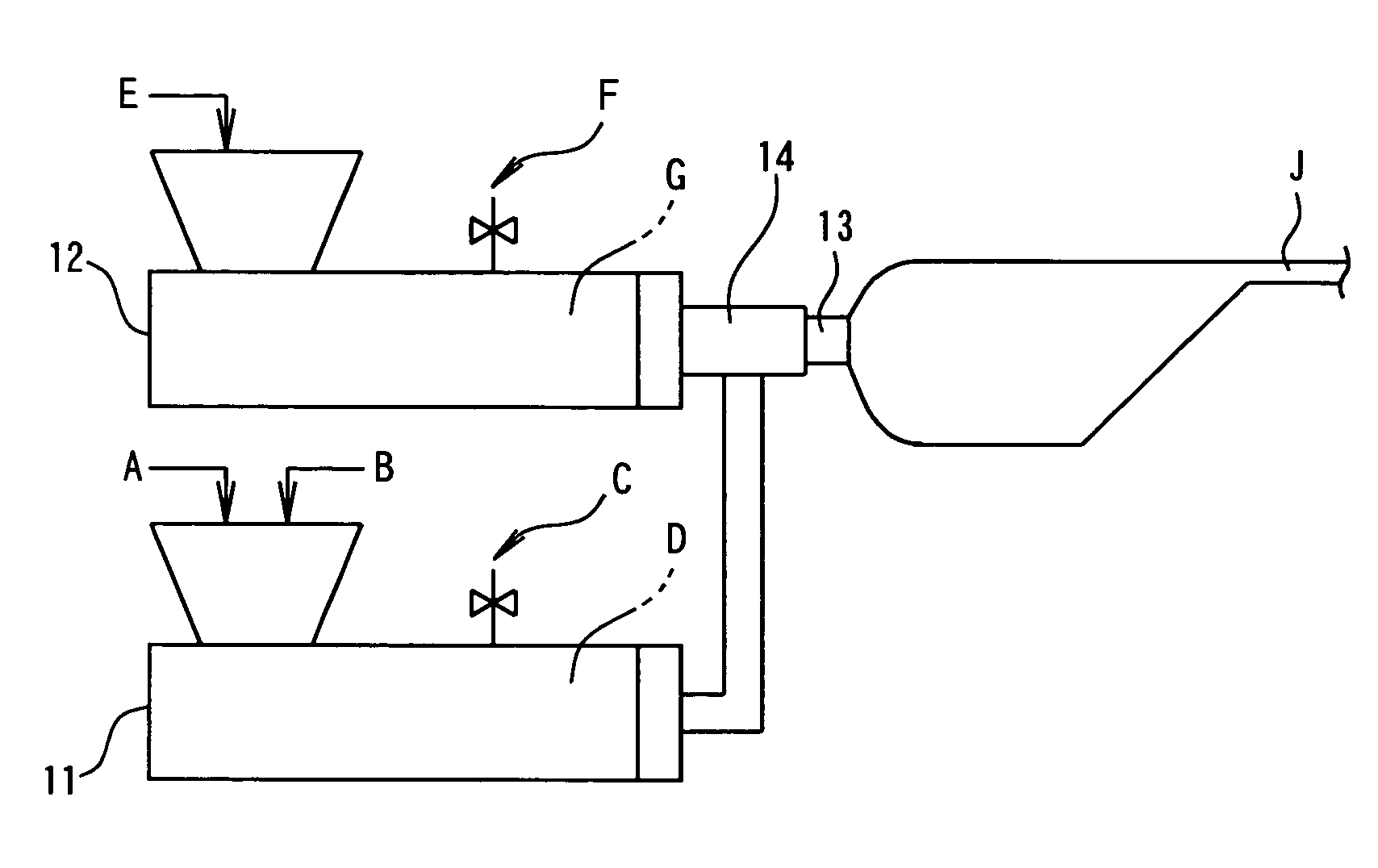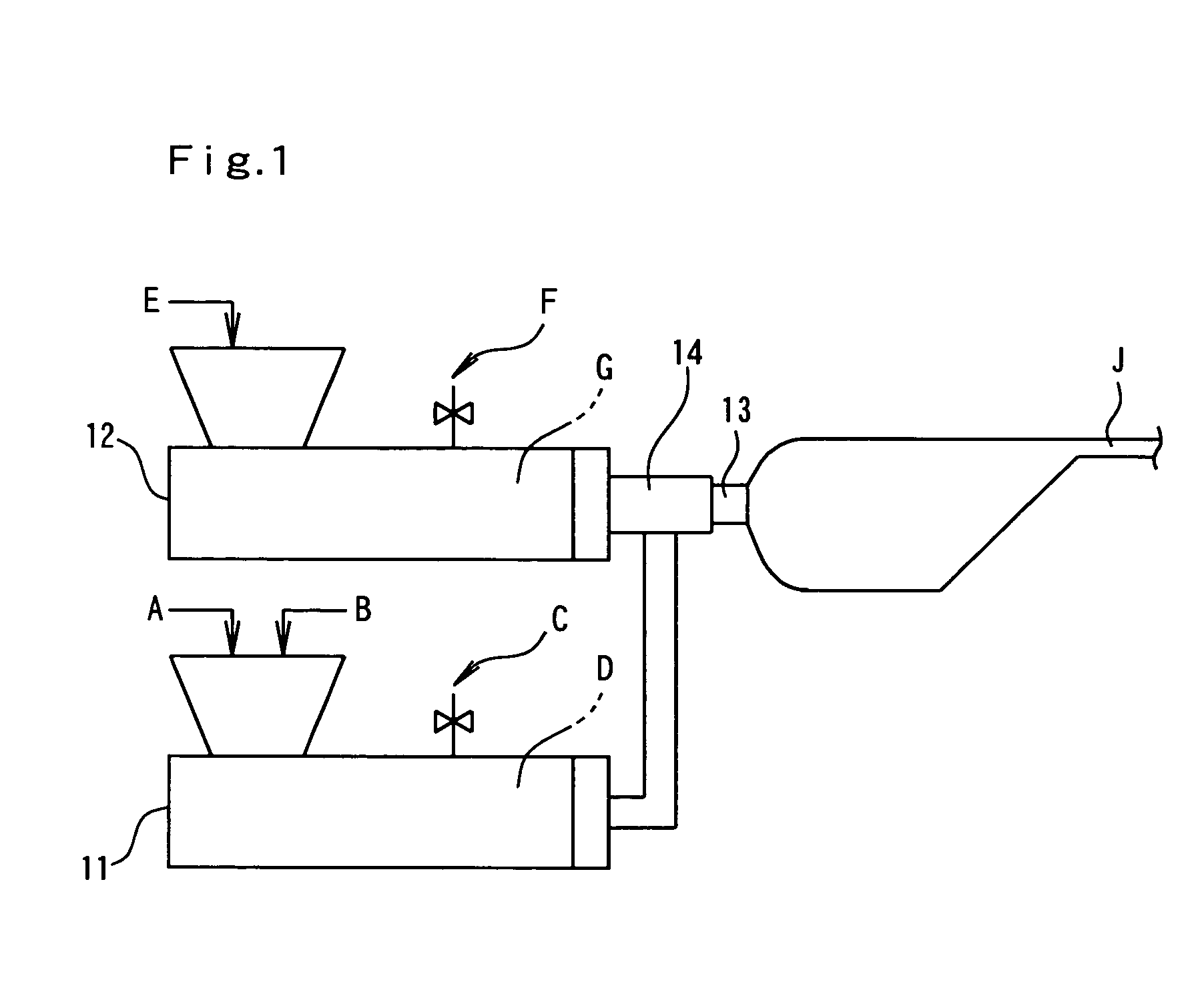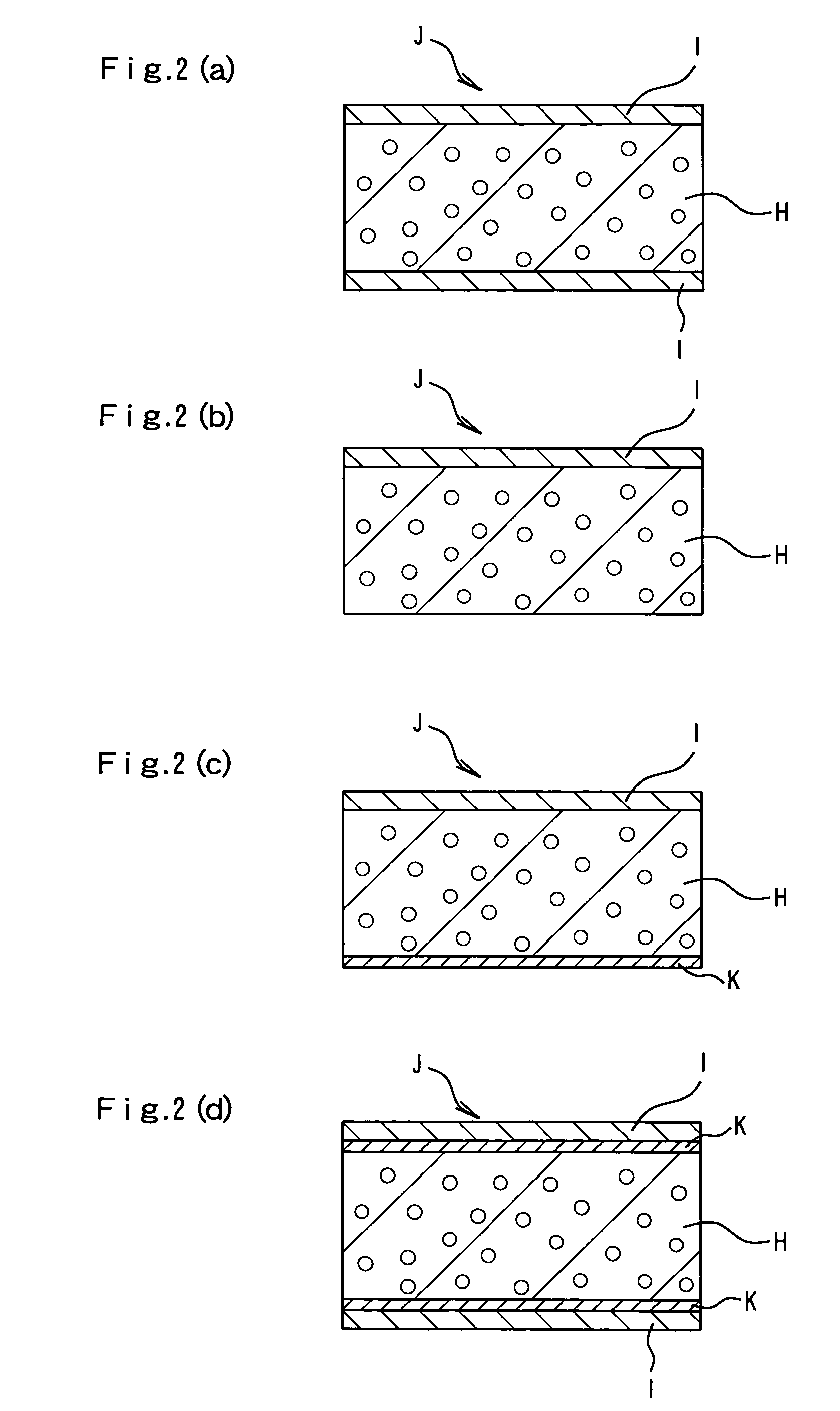Method of producing composite sheet having polyolefin foam layer
a technology of polyolefin foam and composite sheets, which is applied in the direction of synthetic resin layered products, chemistry apparatus and processes, other domestic articles, etc., can solve the problems of unsatisfactory antistatic properties, unsatisfactory durability of laminated foam, and sticky surface whitening, so as to prevent fire accidents and excellent antistatic properties
- Summary
- Abstract
- Description
- Claims
- Application Information
AI Technical Summary
Benefits of technology
Problems solved by technology
Method used
Image
Examples
example 1
[0071]Two extruders having inside diameters of 90 mm and 120 mm and arranged in tandem were used for forming a first melt for a foam layer. An extruder having an inside diameter of 65 mm and a screw with a length / diameter (L / D) ratio of 46 was used for forming a second melt for surface layers. The extruders were connected to a three-layer circular die. Incidentally, a diameter of the die lip was 95 mm.
[0072]100 Parts of low density polyethylene (LDPE[a]) having a density of 922 kg / m3, a melt viscosity of 850 Pa·s and a crystallization temperature [Tc] of 95.8° C. (trade name: NUC8321, manufactured by Nippon Unicar Co., Ltd.) and 3 parts of a cell controlling agent master batch (I) were charged in the 90 mm diameter extruder and kneaded with heating to obtain a melted mixture at about 200° C. To this mixture, a mixed blowing agent (referred to [butane] for brevity in Tables below) composed of 70% n-butane and 30% i-butane was added under a pressure in an amount of 16 parts per 100 pa...
example 2
[0075]Example 1 was repeated in the same manner as described except that the amount of the blowing agent was reduced from 16 parts to 13 parts, that low density polyethylene (LDPE[b]) having a density of 917 kg / m3, a melt viscosity of 640 Pa·s and a crystallization temperature of 93.5° C. (trade name: NUC8008, manufactured by Nippon Unicar Co., Ltd.) was substituted for LDPE[a] in the second melt for forming a surface layer and that the temperature [T2] of the second melt was adjusted to 115° C., as shown in Table 1.1. The composite sheet had a thickness of 1 mm and two surface layers each having a thickness of 2.3 μm.
example 3
[0076]Example 1 was repeated in the same manner as described except that low density polyethylene (LDPE[c]) having a density of 916 kg / m3, a melt viscosity of 460 Pa·s and a crystallization temperature of 91.3° C. (trade name: NUC8009, manufactured by Nippon Unicar Co., Ltd.) was substituted for LDPE[a] in the second melt for forming a surface layer, that the amount of the cell size controlling agent master batch (I) was increased to 5 parts, and that the temperatures [T1] and [T2] of the first and second melts were adjusted to 107° C. and 109° C., respectively, as shown in Table 1.1.
PUM
| Property | Measurement | Unit |
|---|---|---|
| Temperature | aaaaa | aaaaa |
| Percent by mass | aaaaa | aaaaa |
| Thickness | aaaaa | aaaaa |
Abstract
Description
Claims
Application Information
 Login to View More
Login to View More - R&D
- Intellectual Property
- Life Sciences
- Materials
- Tech Scout
- Unparalleled Data Quality
- Higher Quality Content
- 60% Fewer Hallucinations
Browse by: Latest US Patents, China's latest patents, Technical Efficacy Thesaurus, Application Domain, Technology Topic, Popular Technical Reports.
© 2025 PatSnap. All rights reserved.Legal|Privacy policy|Modern Slavery Act Transparency Statement|Sitemap|About US| Contact US: help@patsnap.com



